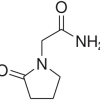





Antimatter; how it works...
Posted by
Darkly Origins
,
in
Biological/Mathematical Concepts
26 December 2014
·
2,392 views
antimatter angular dark matter black gravity antigravity physics astronomy multiverse universe darkly origins
Does Antimatter Fall Up or Down?
This question has never been subject to a successful direct experiment. In other words, nobody has ever directly measured the gravitational acceleration of antimatter. So the bottom line is that we don't know yet. However, there is a lot more to say than just that, with regard to both theory and experiment. Here is a summary of the current state of affairs.
Is is even theoretically possible for antimatter to fall up?
Answer: According to GR, antimatter falls down.
If you believe that General Relativity is the exact true theory of gravity, then there is only one possible conclusion - by the equivalence principle, antiparticles must fall down with the same acceleration as normal matter.
On the other hand: there are other models of gravity which are not ruled out by direct experiment which are distinct from GR in that antiparticles can fall down at different rates than normal matter, or even fall up, due to additional forces which couple to the mass of the particle in ways which are different than GR. Some people donÕt like to call these new couplings Ôgravity.Õ They call them, generically, the Ôfifth force,Õ defining gravity to be only the GR part of the force. But this is mostly a semantic distinction. The bottom line is that antiparticles wonÕt fall like normal particles if one of these models is correct.
There are also a variety of arguments, based upon different aspects of physics, against the possibility of antigravity. These include constraints imposed by conservation of energy (the "Morrison argument"), the detectable effects of virtual antiparticles (the "Schiff argument"), and the absence of gravitational effect in kaon regeneration experiments. Each of these does in fact rule out some models of antigravity. But none of them absolutely excludes all possible models of antigravity. See the Nieto and Goldman reference below for all the details on these issues.
Haven't people done experiments to study this question?
There are no valid direct experimental tests of whether antiparticles fall up or down. There was one well-known experiment by Fairbank at Stanford in which he tried to measure the fall of positrons. He found that they fell normally, but later analyses of his experiment revealed that he had not accounted for all the sources of stray electromagnetic fields. Because gravity is so much weaker than EM, this is a difficult experimental problem. A modern assessment of the Fairbank experiment is that it was inconclusive.
In order to reduce the effect of stray electromagnetic fields, it would be nice to repeat the Fairbank experiment using objects with the same magnitude of electric charge as positrons, but with much more mass, to increase the relative effect of gravity on the motion of the particle. Antiprotons are 1836 times more massive than positrons, so give you three orders of magnitude more sensitivity. Gerald Gabrielse and his co-workers have been cooling and trapping anti-protons at CERN in order to attempt this and other experiments. The results are still inconclusive.
The key to testing the different theories of gravity will be the creation of the antihydrogen atom. Because they are electrically neutral, antihydrogen atoms are not as sensitive to stray electric fields as antiprotons. Unlike many composite objects containing antiparticles, antihydrogen atoms are also absolutely stable making them the preferred object to study.
CERN have recently announced the creation of about 10 antihydrogen atoms, but as these were formed in a beam travelling at close to the speed of light, they really canÕt be used for studying the properties of antihydrogen. At the moment, a number of different groups around the world are gearing up to form antihydrogen at low energies by introducing positrons into an ion-trap that will contain lots of antiprotons.
Most people expect that antiatoms will fall. But it is important to keep an open mind - we have never directly observed the effect of gravity on antiparticles. This experiment, if successful, will definitely be "one for the textbooks."
Does anti-matter attract matter?
This is a different but closely related question. If the Earth was made of matter would everything fall off it. The answer is that if matter attracts anti-matter then anti-matter should attract matter otherwise momentum would not be conserved. It will far more difficult to test this directly since it would require a significant amount of anti-matter to be accumulated before its gravitational pull could be measured.
--
All Rights Reserved; 2011-2015; copyright protected:
(T3T Innovations); Jacob A. Eder; Darkly Origins/Eerie Flickering;
This question has never been subject to a successful direct experiment. In other words, nobody has ever directly measured the gravitational acceleration of antimatter. So the bottom line is that we don't know yet. However, there is a lot more to say than just that, with regard to both theory and experiment. Here is a summary of the current state of affairs.
Is is even theoretically possible for antimatter to fall up?
Answer: According to GR, antimatter falls down.
If you believe that General Relativity is the exact true theory of gravity, then there is only one possible conclusion - by the equivalence principle, antiparticles must fall down with the same acceleration as normal matter.
On the other hand: there are other models of gravity which are not ruled out by direct experiment which are distinct from GR in that antiparticles can fall down at different rates than normal matter, or even fall up, due to additional forces which couple to the mass of the particle in ways which are different than GR. Some people donÕt like to call these new couplings Ôgravity.Õ They call them, generically, the Ôfifth force,Õ defining gravity to be only the GR part of the force. But this is mostly a semantic distinction. The bottom line is that antiparticles wonÕt fall like normal particles if one of these models is correct.
There are also a variety of arguments, based upon different aspects of physics, against the possibility of antigravity. These include constraints imposed by conservation of energy (the "Morrison argument"), the detectable effects of virtual antiparticles (the "Schiff argument"), and the absence of gravitational effect in kaon regeneration experiments. Each of these does in fact rule out some models of antigravity. But none of them absolutely excludes all possible models of antigravity. See the Nieto and Goldman reference below for all the details on these issues.
Haven't people done experiments to study this question?
There are no valid direct experimental tests of whether antiparticles fall up or down. There was one well-known experiment by Fairbank at Stanford in which he tried to measure the fall of positrons. He found that they fell normally, but later analyses of his experiment revealed that he had not accounted for all the sources of stray electromagnetic fields. Because gravity is so much weaker than EM, this is a difficult experimental problem. A modern assessment of the Fairbank experiment is that it was inconclusive.
In order to reduce the effect of stray electromagnetic fields, it would be nice to repeat the Fairbank experiment using objects with the same magnitude of electric charge as positrons, but with much more mass, to increase the relative effect of gravity on the motion of the particle. Antiprotons are 1836 times more massive than positrons, so give you three orders of magnitude more sensitivity. Gerald Gabrielse and his co-workers have been cooling and trapping anti-protons at CERN in order to attempt this and other experiments. The results are still inconclusive.
The key to testing the different theories of gravity will be the creation of the antihydrogen atom. Because they are electrically neutral, antihydrogen atoms are not as sensitive to stray electric fields as antiprotons. Unlike many composite objects containing antiparticles, antihydrogen atoms are also absolutely stable making them the preferred object to study.
CERN have recently announced the creation of about 10 antihydrogen atoms, but as these were formed in a beam travelling at close to the speed of light, they really canÕt be used for studying the properties of antihydrogen. At the moment, a number of different groups around the world are gearing up to form antihydrogen at low energies by introducing positrons into an ion-trap that will contain lots of antiprotons.
Most people expect that antiatoms will fall. But it is important to keep an open mind - we have never directly observed the effect of gravity on antiparticles. This experiment, if successful, will definitely be "one for the textbooks."
Does anti-matter attract matter?
This is a different but closely related question. If the Earth was made of matter would everything fall off it. The answer is that if matter attracts anti-matter then anti-matter should attract matter otherwise momentum would not be conserved. It will far more difficult to test this directly since it would require a significant amount of anti-matter to be accumulated before its gravitational pull could be measured.
--
All Rights Reserved; 2011-2015; copyright protected:
(T3T Innovations); Jacob A. Eder; Darkly Origins/Eerie Flickering;































































